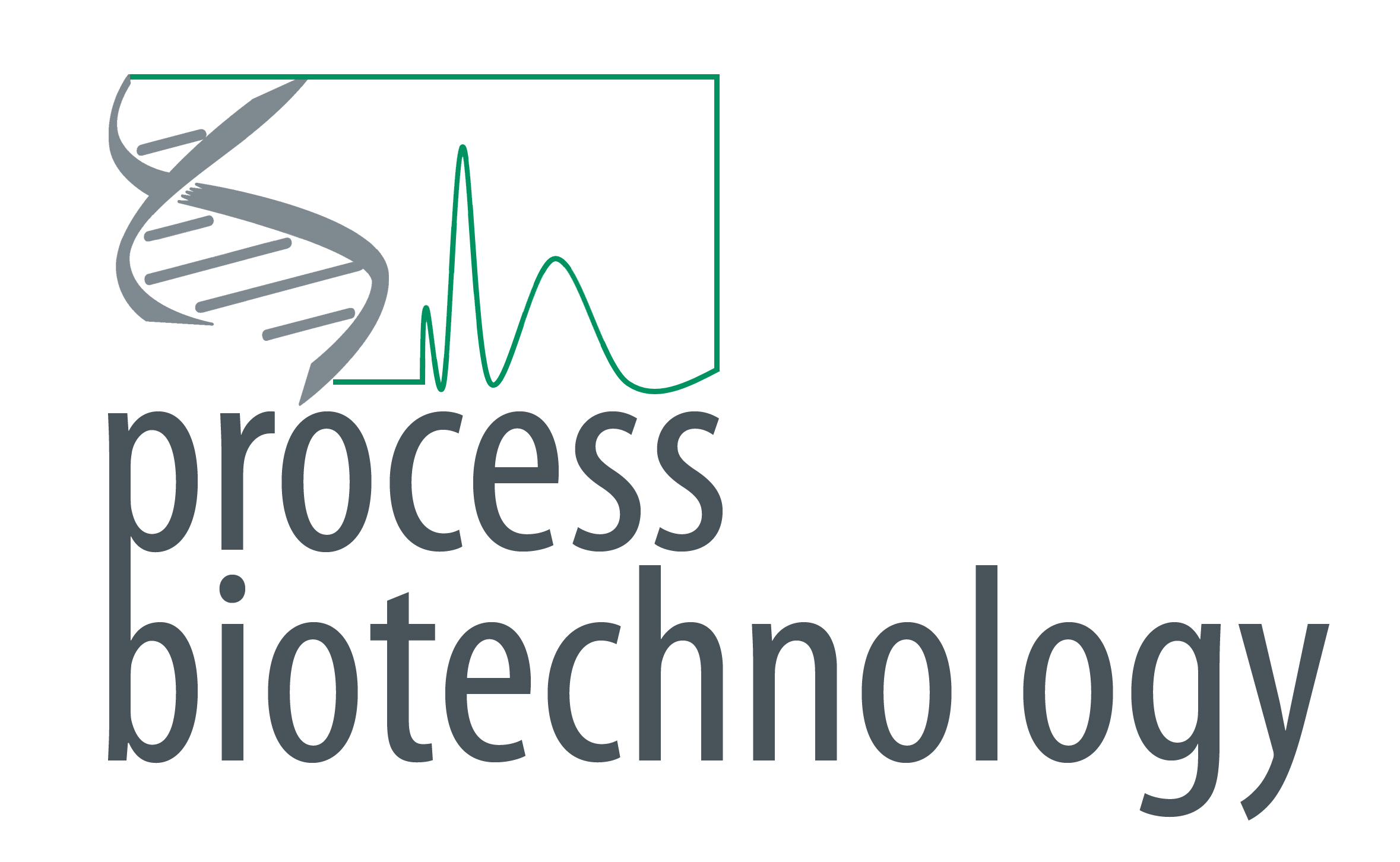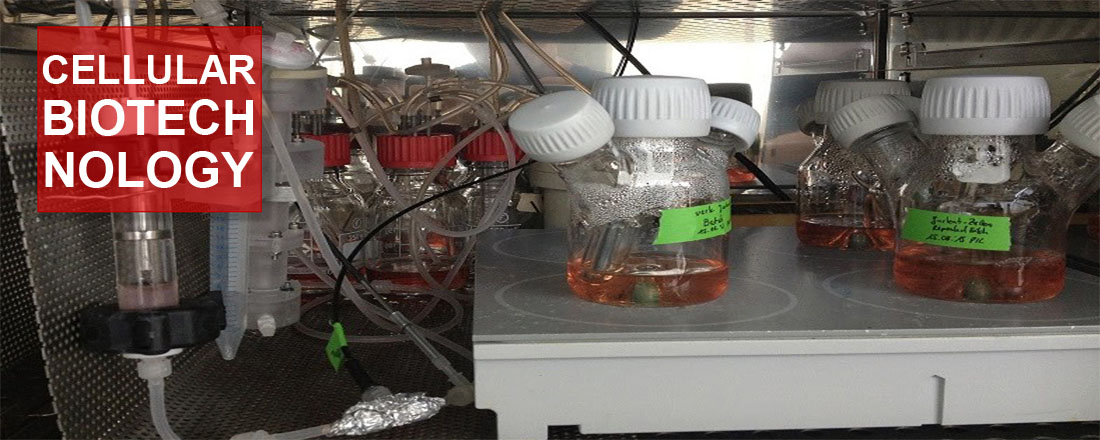Cellular Biotechnology
The group Cellular Biotechnology researches the ex vivo proliferation of primary cells such a human B- and T-lymphocytes, innovative non-viral transfection technologies of mammalian cells, investigation of noxic effects on model organisms (e.g. compost worm) through microplastic particles, and tissue engineering with a focus on the reconstruction of the liver and encapsulated B- and T- lymphocytes as part of a bioartificial lymph node.
One research focus is the investigation of non-viral mechanisms of genetic modification of standard cell lines, such as those currently in use in pharmaceutical biotechnology, as well as currently classified “difficult-to-transfect” cells (e.g. suspension cells, differentiated cells, human primary cells).
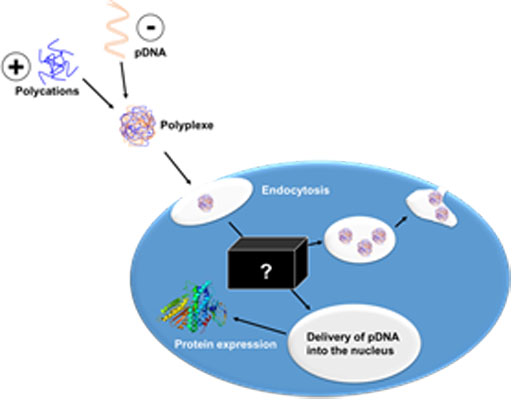
Non-viral transfection of mammalian cells
The targeted genetic modification (“transfection”) of mammalian cells is a requirement for a number of different applications, such as the development of gene therapy or establishing a biotechnological production cell line. In the case of eukaryotic and in particular mammalian cells, the foreign DNA has to overcome several barriers such as the cellular membrane and the cytosol and finally enter the nucleus. In case of a stable transfection, insertion into a chromosome is also required. While viruses perform these tasks quite efficiently and for that reason dominate genetic medicine, viral vectors are rarely used in biotechnology for reasons like safety, but also the limited amount of DNA that can be inserted in these vectors.
In a collaboration with experts in medicine, biology and polymer chemistry, innovative and efficient non-viral transfection agents and methods have been developed at the chair for over 10 years. Of particular notice are the “Bayreuth Nanostars”, star-shaped polycations which display a high potential for the transfection of several difficult-to-transfect cell types, such a human primary or non-proliferating cells. Using the Nanostars, the transfection efficiency of T-lymphocytes was increased to 80% at preserved viability (> 80%). This allows for the efficient transfection of T-cells at small scale for research. The scale-up of these methods would form the basis for the production of modified T-cells for medical applications (T-cell therapies). The optimization of the transient transfection at large scales is of particular interest in the biopharmaceutical production, and allows for the production of the desired protein at mg scale in a short timeframe.
Research Partner:
- Max Planck Institute for Polymer Research, Mainz
- Institute for Organic Chemistry, Johannes Gutenberg University of Mainz
- Department of Chemistry, Unversidad Nacional de Colombia, Bogotá D.C., Colombia
Funding:

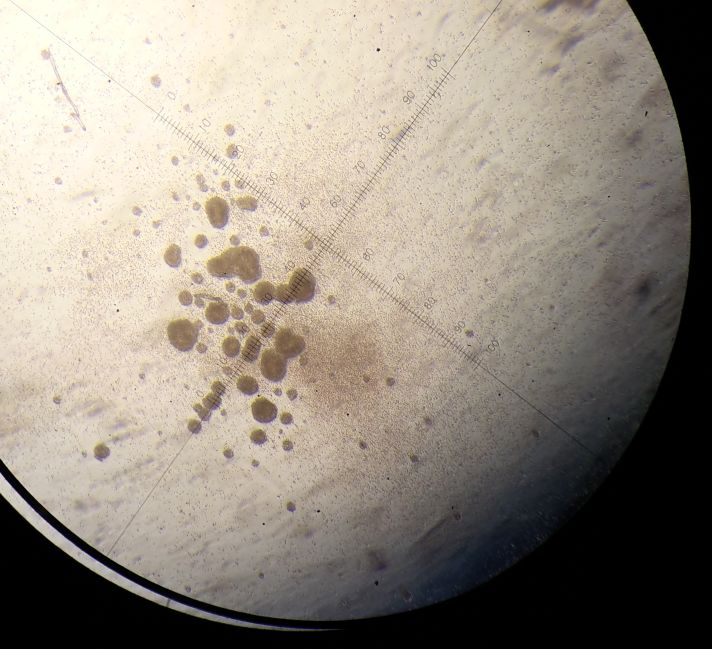
Proliferation and Differentiation of Primary Human B- and T-Lymphocytes
The ex vivo expansion of human primary B- and T-lymphocytes is of considerable scientific and medical importance. The controlled growth and differentiation of T-lymphocytes can be used in modern cancer treatments (immunotherapy) against patient-specific tumor epitopes. B-lymphocytes can be used for ex vivo vaccinations for treatments of HIV or cancer, as well as for the production of antibodies. Both cell types are suitable replacements for animal testing. At the chair, strategies for the controlled expansion and differentiation of primary human lymphocytes outside the human body have been investigated for several years. For T-cells, a system has been developed which cultivates freshly isolated cells in a semipermeable polyelectrolyte microcapsule at high cell densities. Cellulose sulfate is used for the encapsulation, which displays biomimetic characteristics and is able to mimic the extracellular matrix. This has a positive impact on the T-cell proliferation via IL-2 trans-presentation.
In contrast to T-lymphocytes, B-cells have not yet been used in therapeutic applications. They are difficult to cultivate and have to be isolated from donor samples of tonsils or spleen. Initial success has been achieved in the isolation and proliferation of B-cells using murine B-lymphocytes. Over the course of the current research project, B-cells from human donors have been isolated and used to develop cultivation strategies.
The research of proliferation stimulation is carried out in close collaboration with other research groups. The goal is a scalable process for the sustainable expansion of primary human B-lymphocytes, ideally via the development of a cell reactor, combining all the accumulated knowledge.
Research Partners:
- Chair of Microbiology, Prof. Dr. Schüler, University of Bayreuth
- ENT physicians, Kulmbach, Dr. med. Gollner
Funding:

German Research Foundation
Project: DFG FR 830 / 14-1, DFG FR 830/21-1
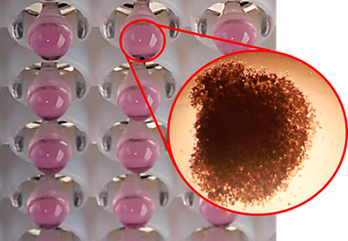
Cells and Tissue
Strain banks and culture collections are an effective provider of cells and increasingly of (micro)tissues for all kinds of research purposes. However, to this day, cells have to be isolated cultivated from tissues samples. Currently, a number of different cells are being isolated and cultivated, including liver cells, B- and T-lymphocytes, as well as intestinal epithelial cells from earthworms and immune cells from water fleas. These cells are used for the directed reconstruction of microtissues.
Research Partners:
- Chair of Animal Ecology 1, Prof. Dr. Laforsch and Prof. Dr. Feldhaar, University of Bayreuth
- Tonsil & ENT physicians, Kulmbach
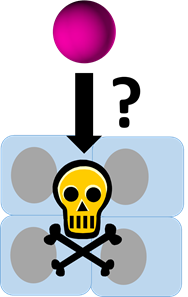
Effects of Microplastics (MP) on Cellular Level
This project is part of the Collaborative Research Centre 1357 “Microplastics”. The research investigates the effects of MP-particle uptake and/or interactions on a cellular level. Immortalized mural cell lines as well as primary cells isolated from aquatic and terrestrial model organisms are tested in order to answer central questions pertaining MP in the food web, such as:
- Which noxic reactions (toxicity, inflammation, disruption of cell cycle) can be observed on cellular level?
- What effect do MP surface characteristics (chemical, topographical) have?
- What mechanisms drive intracellular distribution and accumulation?
- Do the MP particles undergo any reactions (e.g. partial degradation, fragmentation) in cellular environments, and what effect does that have on cells?
- How are MP or their degradation products released from cells?
- Are there fundamental differences of cellular reaction between MP particles and inorganic microparticles?
- Studies on model organisms such as Eisenia fetida, a commonly used terrestrial model organism in ecotoxicological analysis. The aim of the work is the isolation and cultivation of primary intestinal E. fetida cells in order to facilitate ecotoxicological studies using microplastic and isolated cells.
Research Partner:
- Chair for Biomaterials, Prof. Dr. Scheibel, University of Bayreuth
Funding:
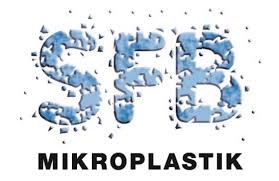

Collaborative Research Centre 1357
funded via the German Research Foundation
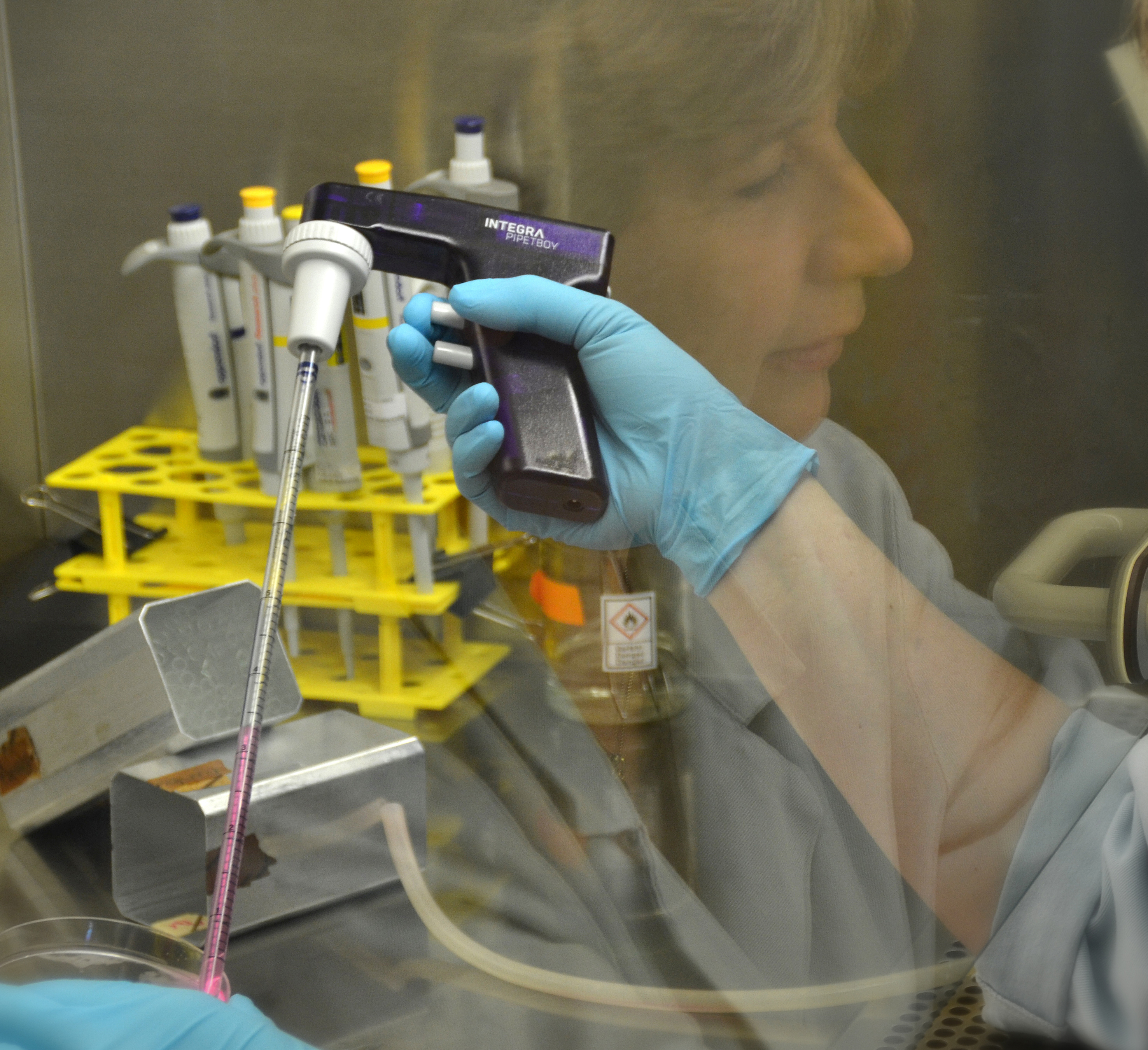
Biomimetic Stimulation of Mammalian Cells
Cell-cell contacts are important signals in the development and differentiation of cells. In order to induce targeted responses, for example in tissue engineering, the most common solutions are soluble ligands, which provide a reduced efficiency, or recombinant feeder cells, which are often not readily available, require highly specific cultivation environments and constitute danger of contamination. Biomimetic alternatives which present the necessary membrane-bound protein ligands on suitable particles are being developed at the chair. Microsomes as well as magnetosomes are being investigated. Both display the potential to present protein ligands in a biological membrane structure.
Research Partners:
- Chair of Microbiology, Prof. Dr. Schüler, University of Bayreuth
Tissue Engineering
The aim of tissue engineering is to replace damaged tissue and organs in the human body. The chair is active in to research areas. One project investigates the development of an extracorporeal module for liver support. The liver displays a high level of internal regeneration. Many liver transplants can be avoided if the liver was relieved of its duty for a certain period of time. In order to achieve this, an external module needs to be able to provide liver functions. In a cooperation with the Chair of Engineering Design and CAD, the additive manufacturing and 3D printing of suitable support systems is being investigated. In a second research project, a collaborative effort with the Chair of Macromolecular Chemistry II is developing functionalized meshes and non-woven fabrics on a polymer basis for 3D settlement of cells.
Research Partners:
- Chair of Macromolecular Chemistry, Prof. Dr. Greiner and Prof. Dr. Agarwal, University of Bayreuth
- Campus Additive Innovations (CA.I), University of Bayreuth

